Hands On: Patek Philippe In-Line Perpetual “Rose Gilt” Ref. 5236P-010
A "salmon" face for the flagship perpetual.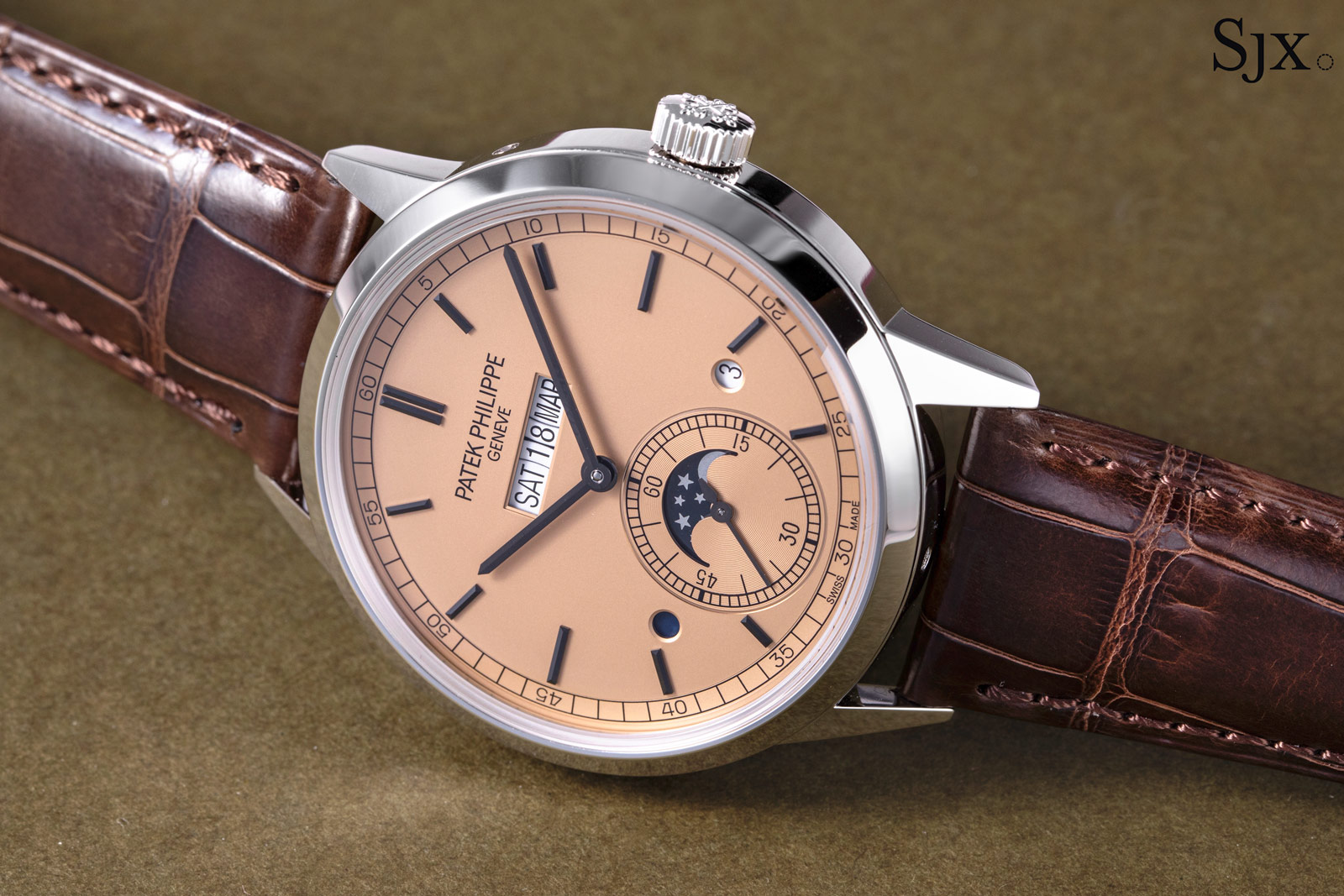
Launched earlier this year as the second variant of the “linear” perpetual, following the original with a dark blue dial, the Patek Philippe In-Line Perpetual Calendar Ref. 5236P-010 has a “rose-gilt opaline” dial – and was recently trending on social media for having been spotted on Facebook cofounder Mark Zuckerberg’s wrist. The symmetrical dial retains the signature calendar display in a single line under 12 o’clock, with hands and markers in black-coated white gold.
It’s a cosmetic variation of the original in a currently fashionable colour, but the “salmon” dial arguably works best with the clean styling of the ref. 5236P, which is Patek Philippe’s most sophisticated perpetual calendar.
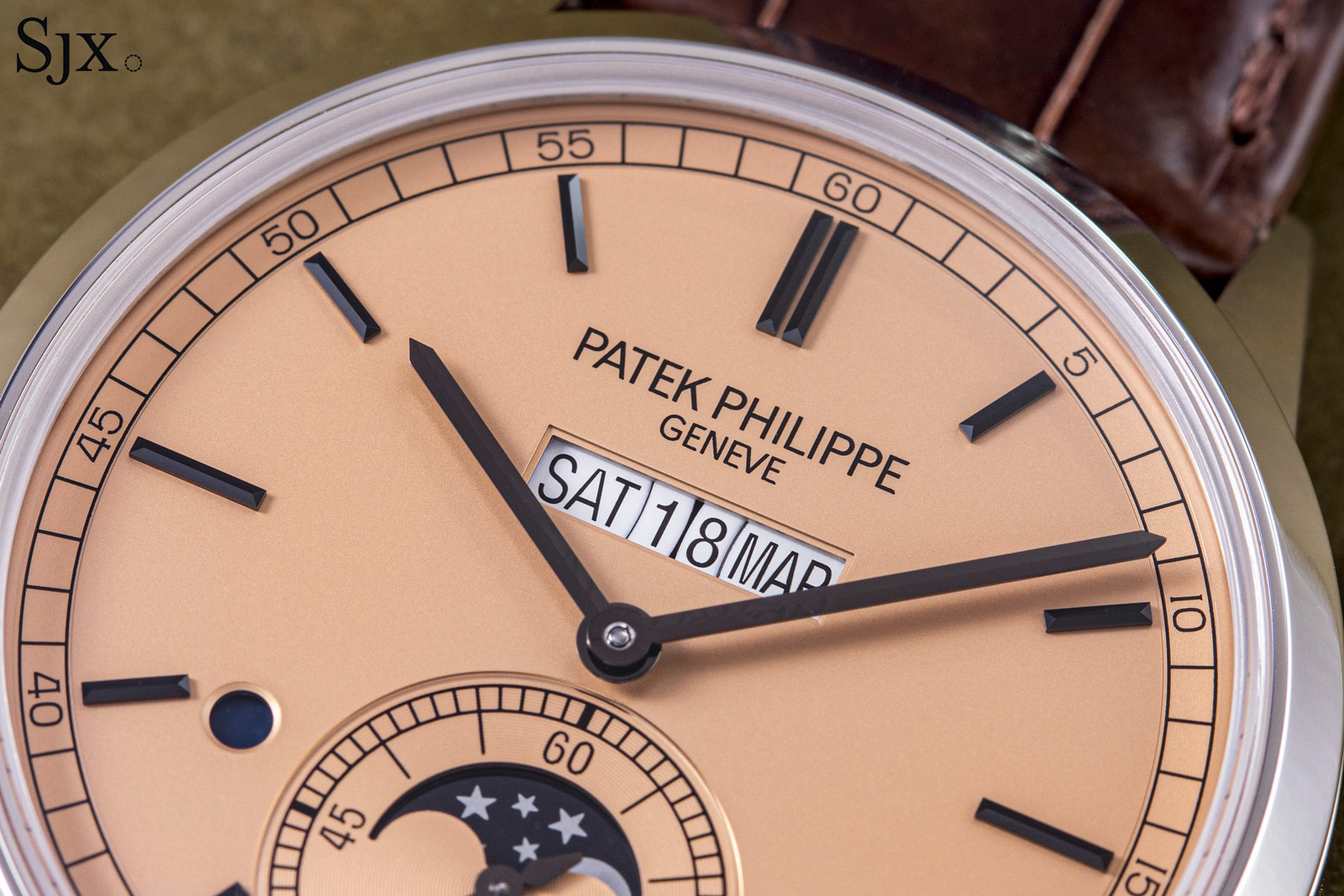
Initial thoughts
Officially “rose-gilt opaline”, the pink tone is often known as “salmon” and it’s probably the most fashionable colour now. While not too long ago Patek Philippe had no “salmon” dials in the regular production line up, today’s catalogue includes four.
Even though the colour is in theory identical across the four current models with “rose-gilt opaline” dials, the effect varies depending on the dial finish; the ref. 5935A with guilloche dial is the most different. Of the four, the design of the ref. 5236P is the ideal complement to the “salmon” colour, even compared to the ref. 5320G-011 Perpetual Calendar that has a similar dial layout.
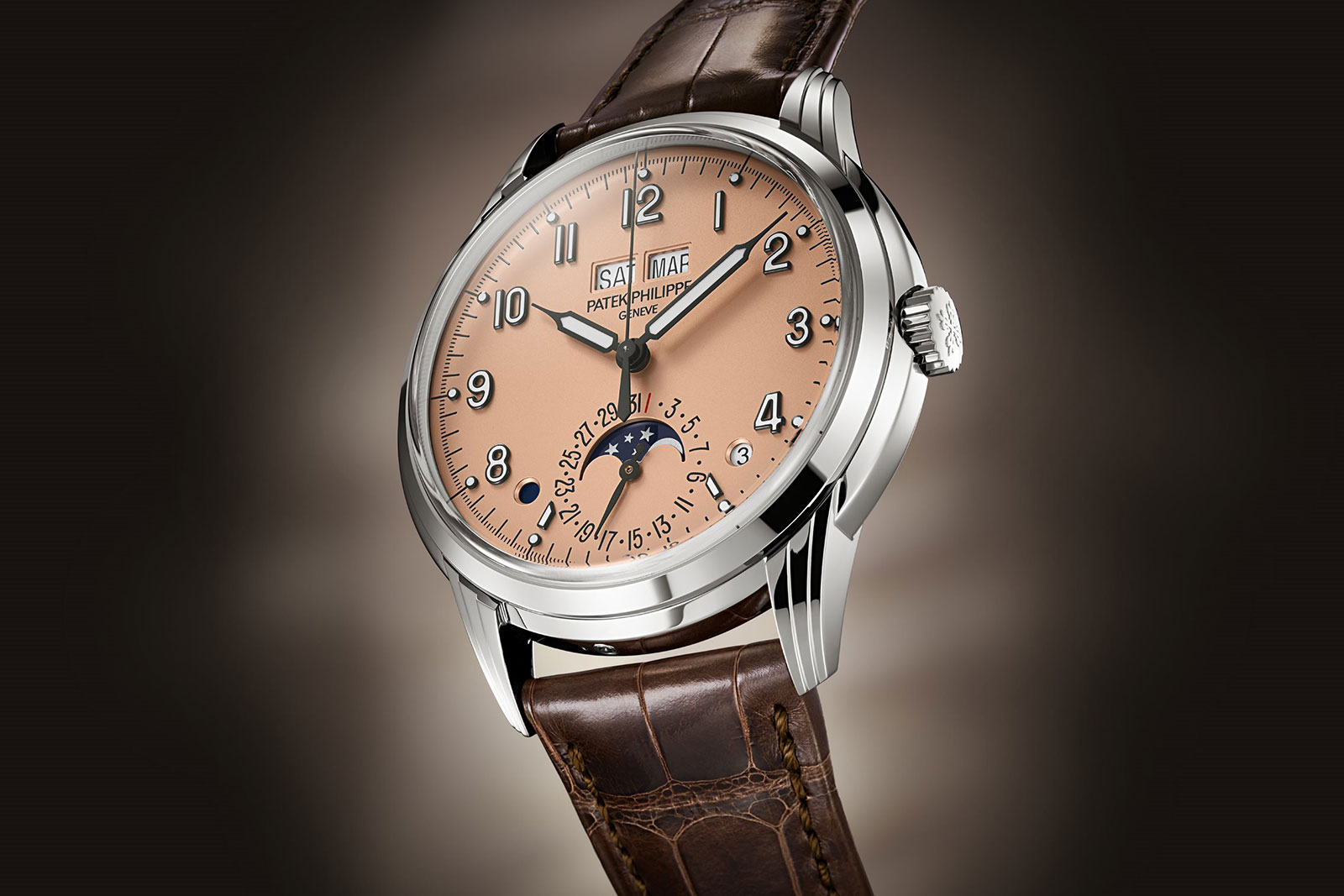
The ref. 5320G-011. Image – Patek Philippe
The pink finish is a strong colour that stands out, and it works well with the relatively clean dial design. In fact, I prefer this to the gradient dark blue found on the original version of the ref. 5236P, particularly since the moon phase display is more prominent against the lighter dial.
Dial colour aside, the new ref. 5236P is identical to the original. It’s slightly wider than average for a Patek Philippe, but relatively slim, so it still has elegant proportions. The pink dial makes it look a little larger than the version with the dark blue dial, but not substantially.
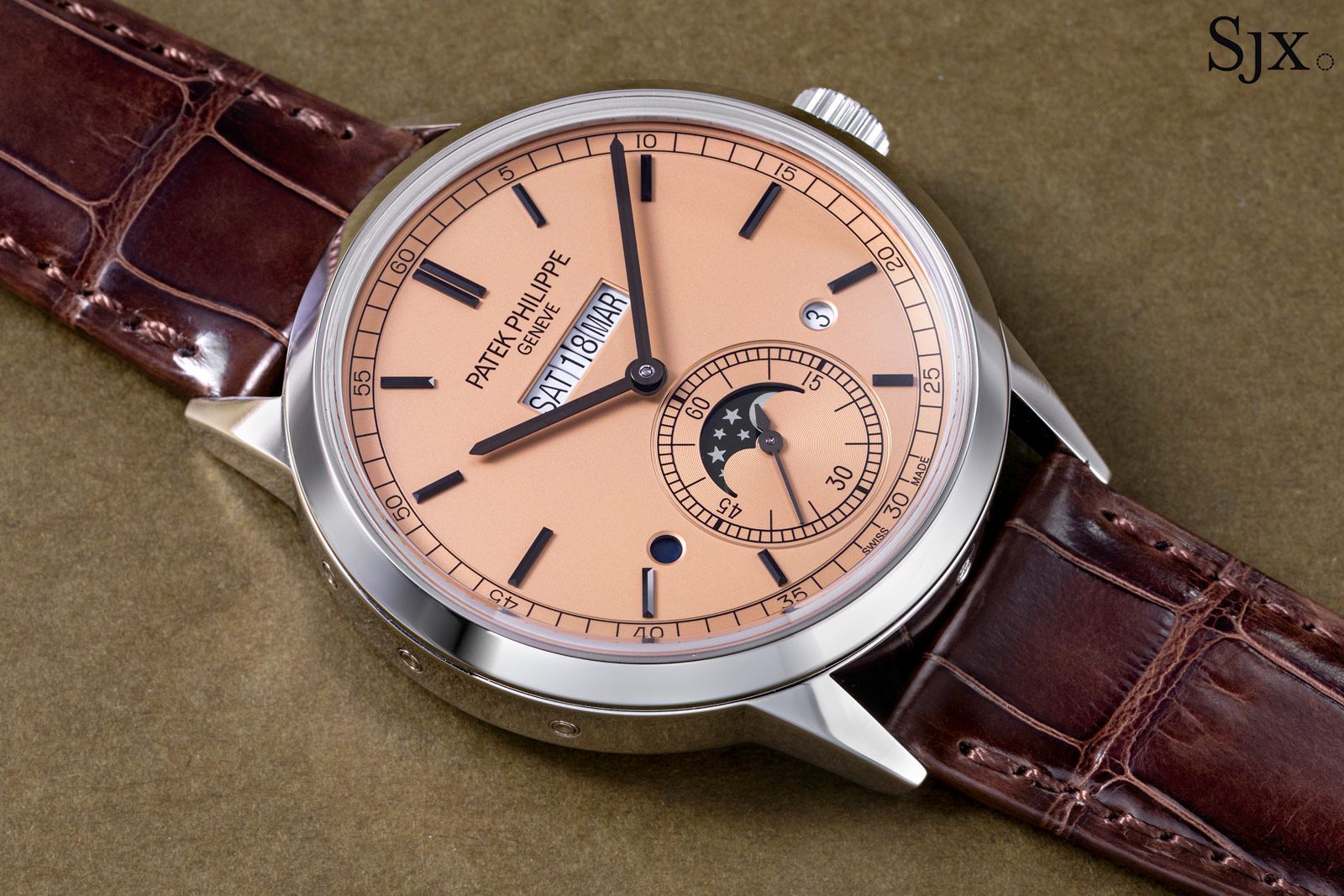
The movement inside remains the cal. 31-260 PS QL, one of Patek Philippe’s latest generation movements. It’s large, flat, and technically sophisticated, though the calibre is fundamentally a traditional calendar mechanism with inconveniences like needing a stylus to operate the multiple calendar pushers. And more so than the brand’s automatic movements from the 20th century, it was clearly designed to look good through a display back.
The new ref. 5326P is also priced the same as the original version, which makes it one of the most expensive “simple” perpetual calendars on the market. The ref. 5326P costs US$141,400, but it’s not instantaneous, nor does it include additional complications – but it is a Patek Philippe.

The cal. 31-260 PS QL
A tidy display
The ref. 5236P takes its cues from the “linear” perpetual calendar pocket watches of the 1950s and 1960s, namely the ref. 725 with perpetual calendar only, and the refs. 699, 843, and 844 that also included a minute repeater. The nickname stems from the calendar display within a single, horizontal window under 12 o’clock, which instantly sets such watches apart from conventional calendar displays that rely on multiple sub-dials.
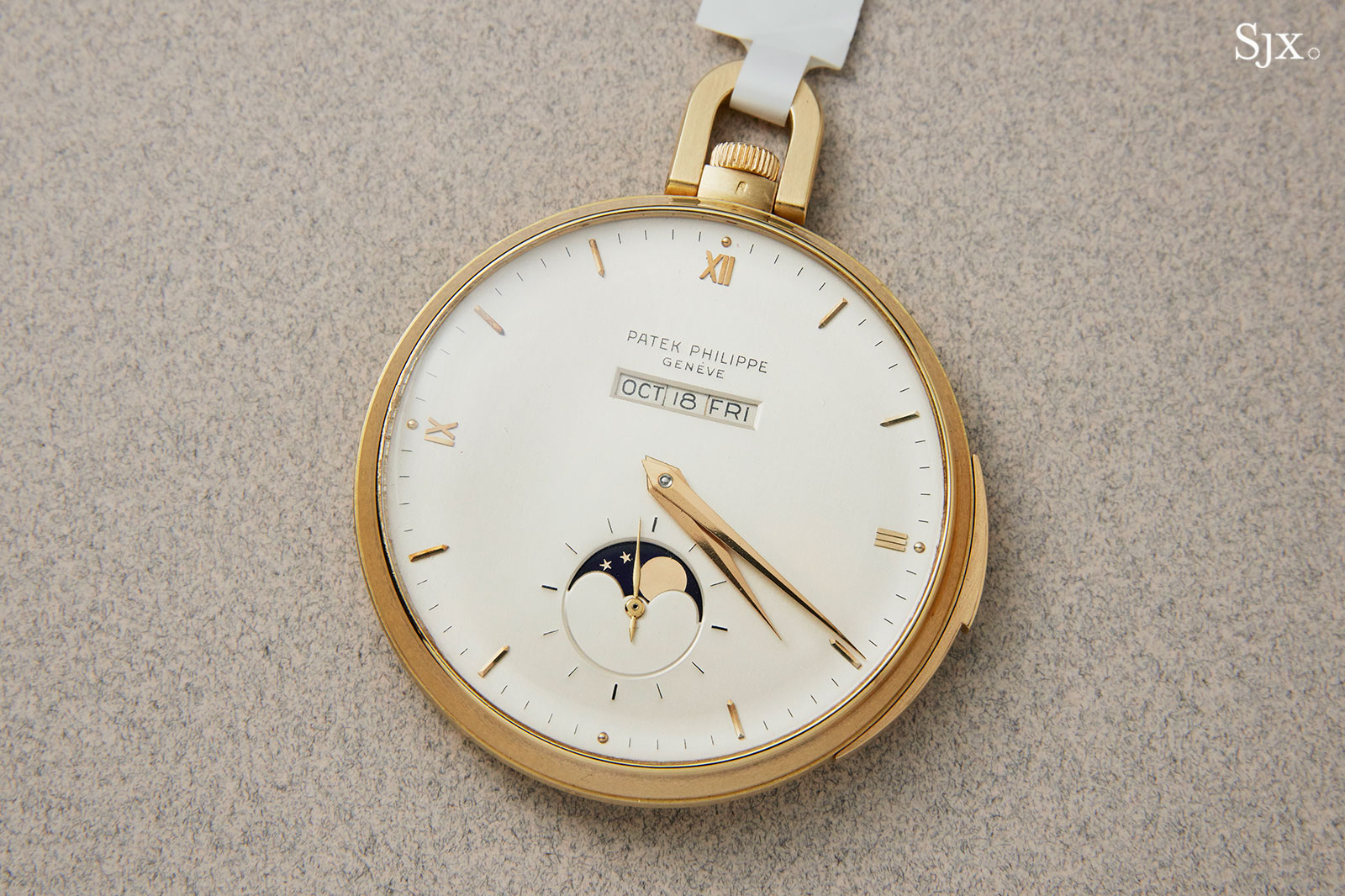
Though Patek Philippe made several pocket watch models with a linear calendar, the ref. 5236P was its first wristwatch with such a display. As a result, the in-line calendar required an entirely new calendar mechanism, rather than just reworking an existing calendar module.
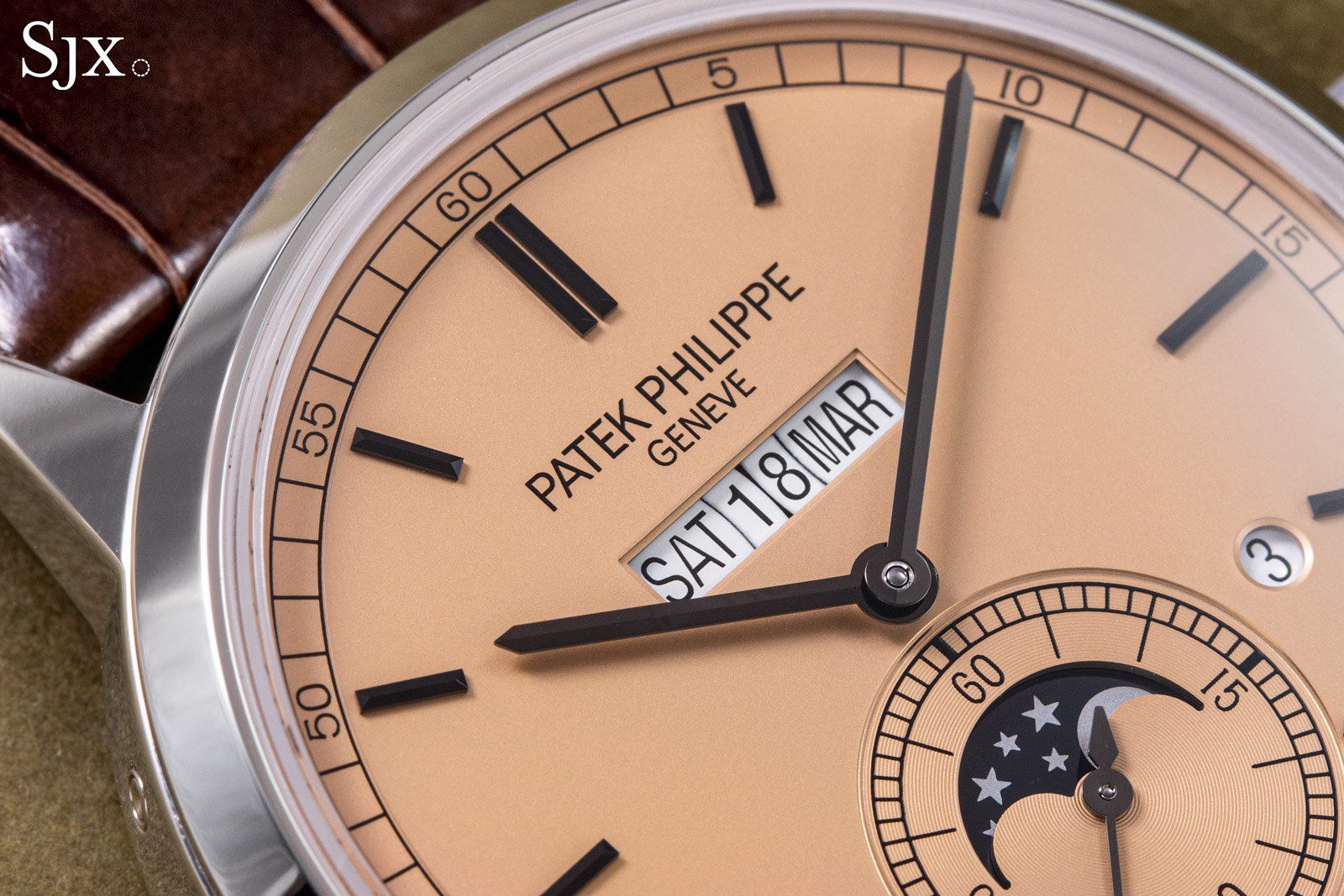
The in-line calendar module was developed from the ground up for the ref. 5296P, though the base movement is the same cal. 31-260 also found in the Calatrava 24-Hour Display Travel Time ref. 5224R and Annual Calendar Travel Time ref. 5326G.
Smart engineering to fit the calendar mechanism into the space on the top half of the dial, while keeping it thin. We explained the intricacies of the movement in our story on the original ref. 5296P-001.

The calendar display is made up of four discs. Image – Patek Philippe

The calendar mechanism showing the 31-tooth date star. Image – Patek Philippe
Although the calendar display is novel for Patek Philippe, the fundamental principle of the calendar mechanism is the traditional “grand lever” concept, meaning the calendar works like a conventional perpetual calendar – and has all of the inconveniences of a conventional perpetual calendar.
This means the indications change over a few hours at midnight, a period during which the calendar cannot be set due to the likelihood of damaging the mechanism. And the various calendar indications are set via recessed pushers on the case, a task that requires a stylus.
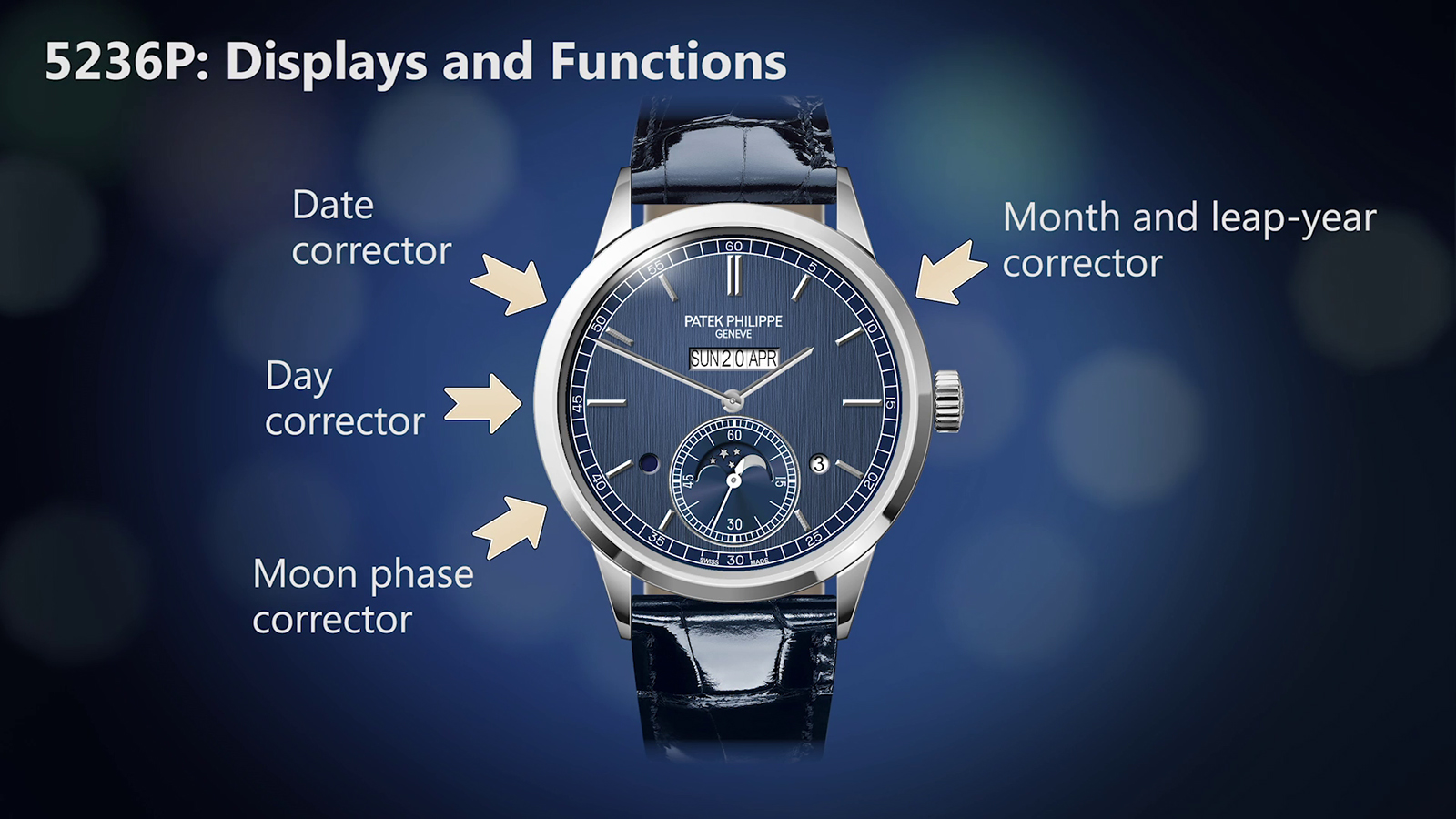
Adjusting the calendar is an exercise with four pushers. Image – Patek Philippe
Salmon
While the original model had a vertically brushed dial, the new dial has an “opaline” surface, which means finely grained. This gives the “rose-gilt” treatment a matte finish.
As is often the case for Patek Philippe’s “salmon” dials, the hands and markers are in a dark grey that’s practically black in most lighting. They are actually 18k white gold, but coated for a black finish.
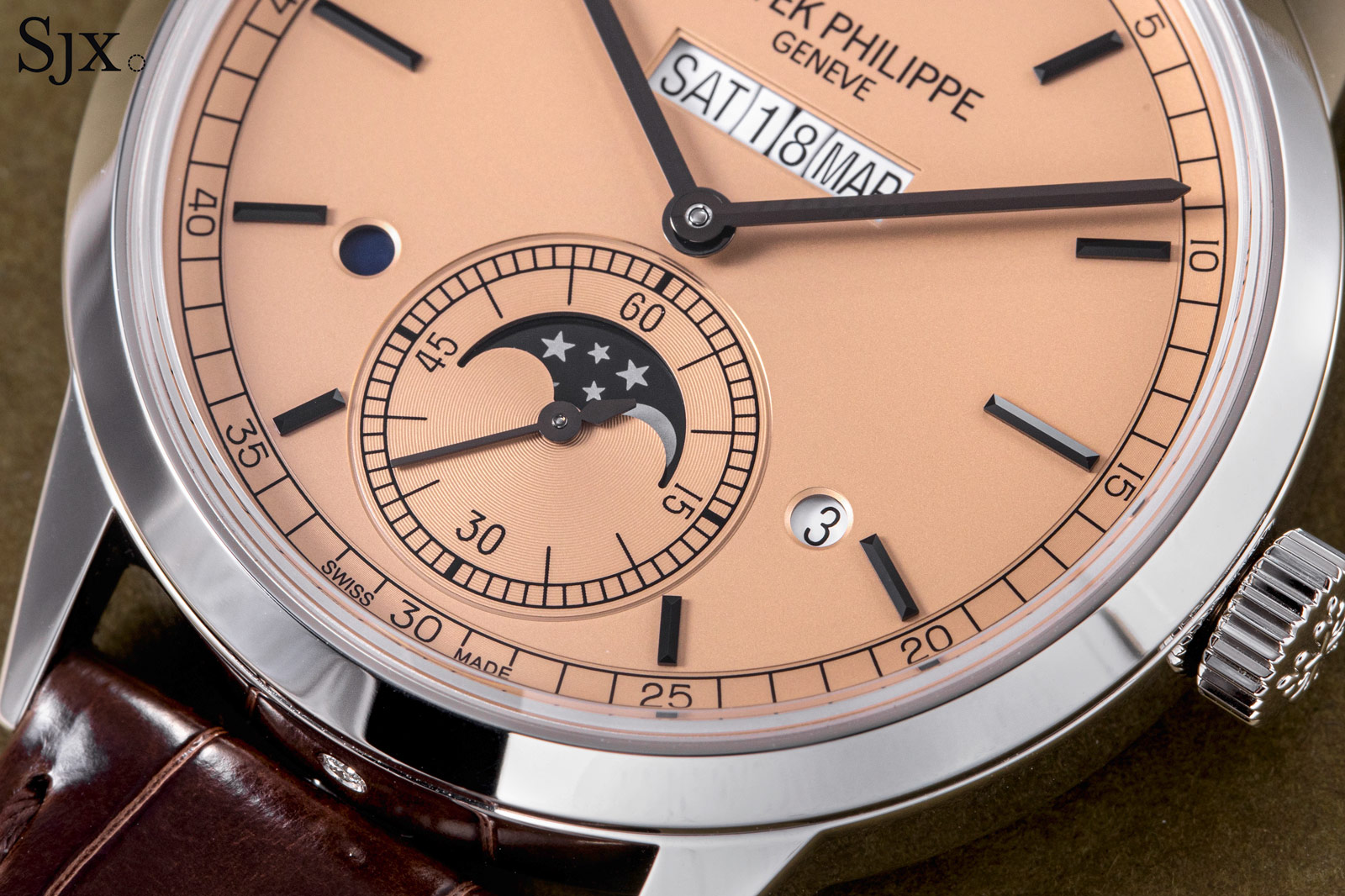
The dial is clean, symmetrical, and appealing, though the moon phase is stock and found across all of Patek Philippe’s moon phase displays. I would have liked a brighter blue disc that would complement the dial colour better.
Overall the dial finish is highly quality but not as elaborate as some other recent models, like the Calatrava ref. 5226G that has a stamped graining or the 24-Hour ref. 5224R with multiple applied markers.
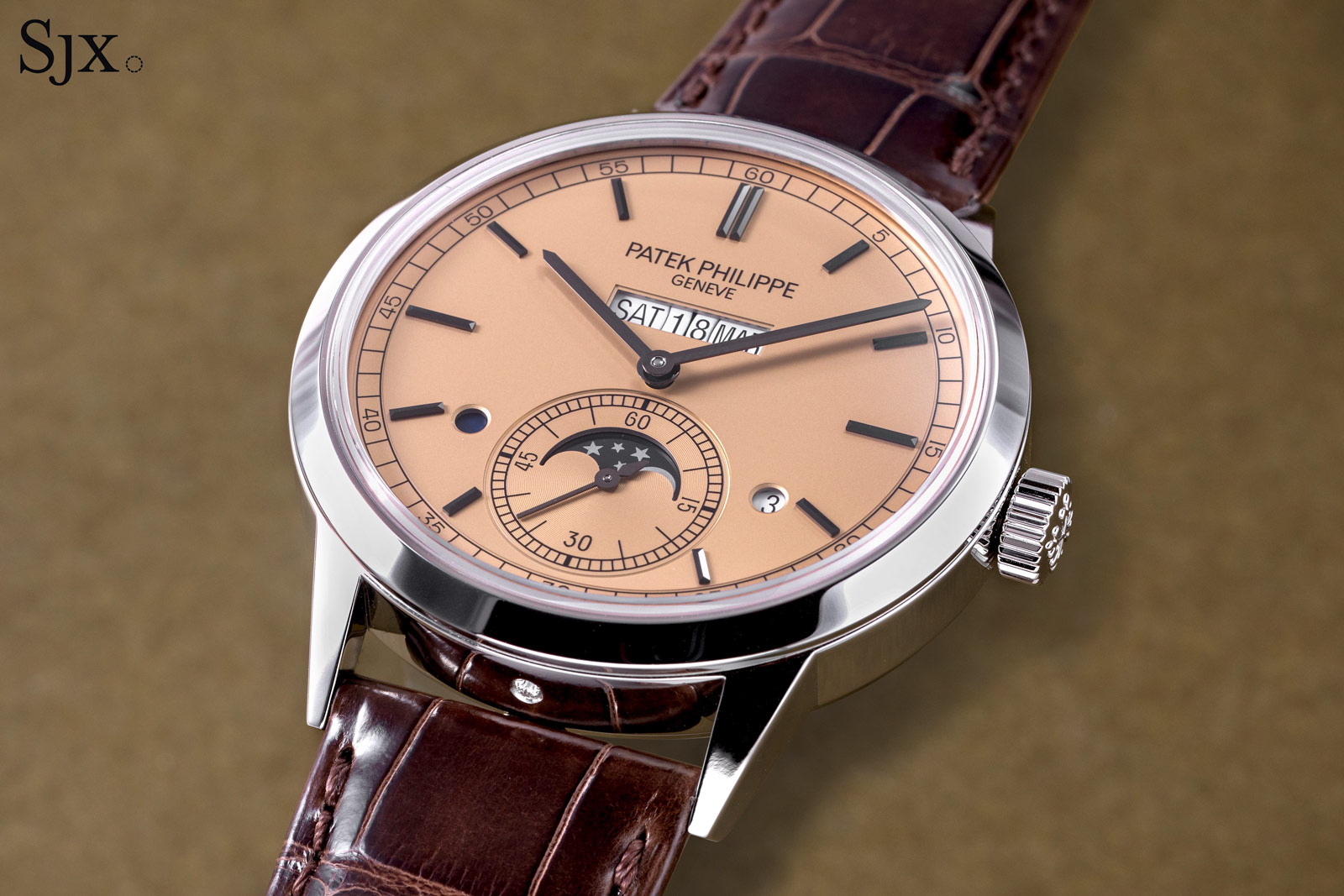
The case remains the same, wide and flat, and entirely in polished platinum. The polished finish is typical of Patek Philippe, but some brushed surfaces would have made the case more interesting.
The straight lines of the case are inspired by the vintage refs. 3448 and 3450 perpetual calendars, a design that Patek Philippe first reproduced in the modern day with the ref. 5235 Regulator Annual Calendar. The style of the case emphasises its size, though the watch is notably thin.
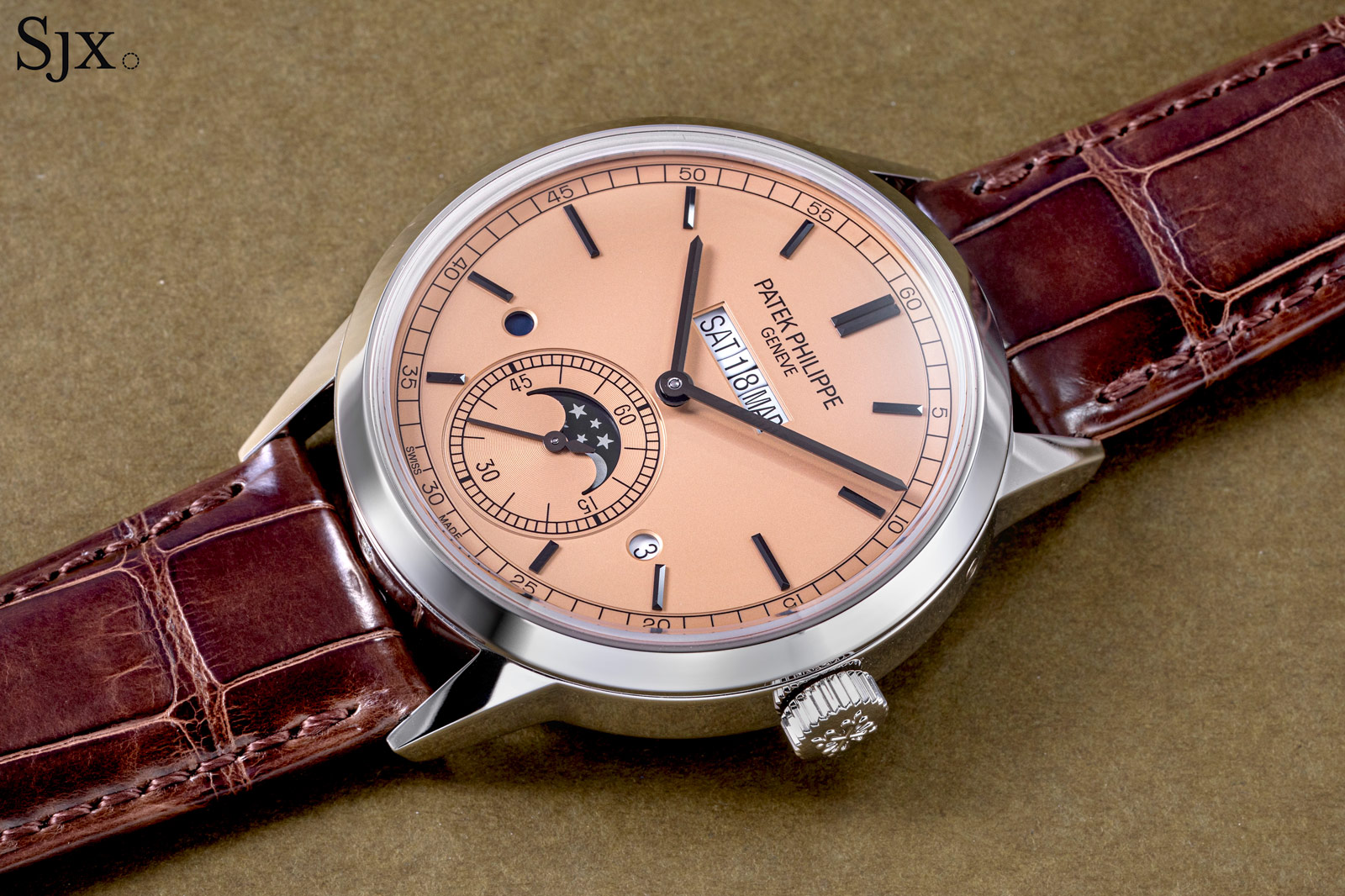
The cal. 31-260 PS QL inside is Patek Philippe’s latest and best perpetual calendar movement. Not only does it have a novel calendar display, it also employs the brand’s top-of-the-line automatic base movement.
At 34 mm in diameter, the cal. 31-260 PS QL is the largest Patek Philippe self-winding movement, which is obvious through the display back. The movement fills up the case considerably, and its size also allows for more visual detail.
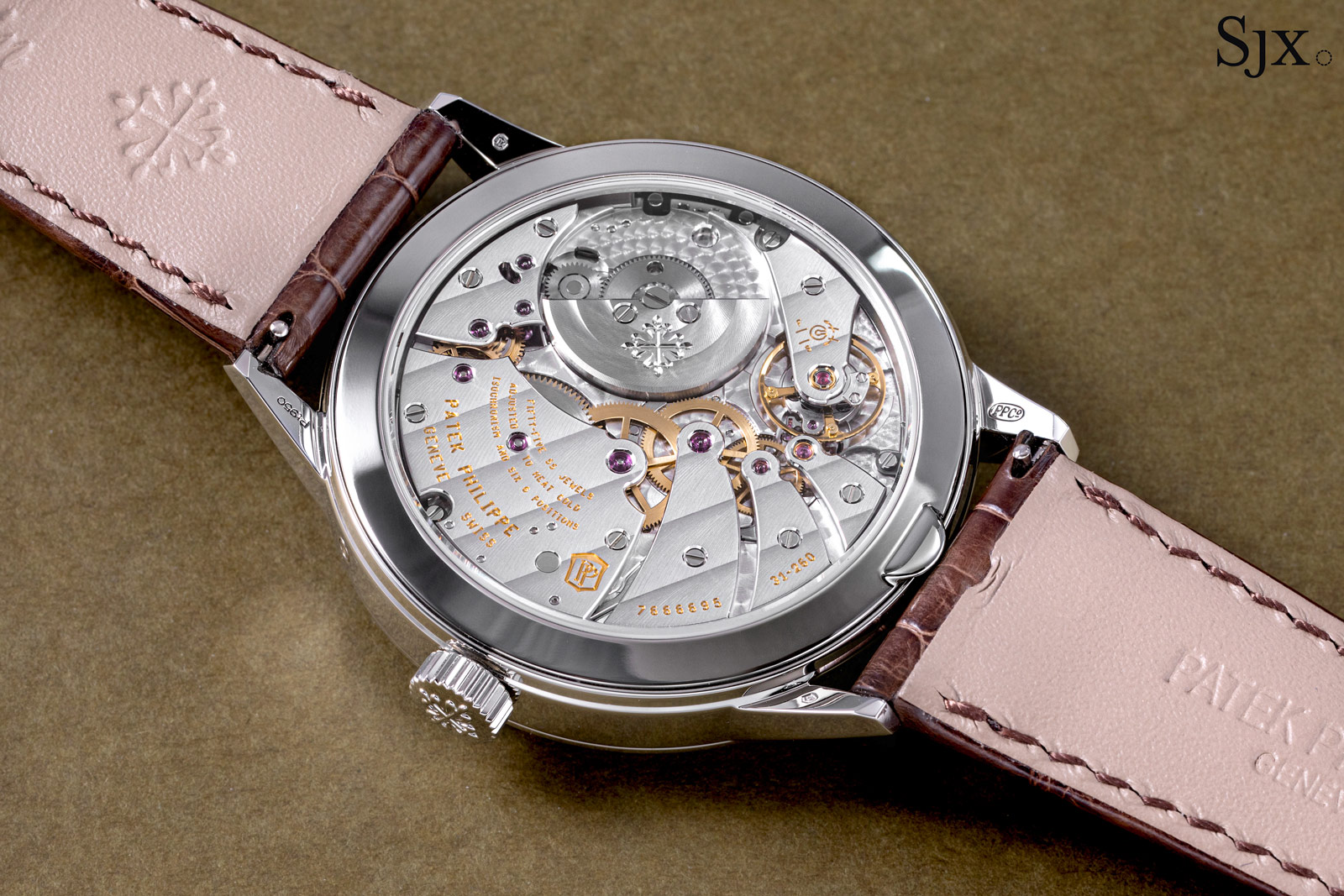
The movement has a single barrel wound by a platinum micro rotor. It has a relatively short power reserve, officially 38-48 hours but closer to 48 in practice, which is unusual for a modern movement, especially one with a small balance wheel.
This can be attributed to the thinness of the movement and size of the micro rotor, both of which impose significant constraints on the mainspring size. That said, a self-winding perpetual calendar doesn’t require a substantial power reserve in theory, since it can easily be stored in a winder, which Patek Philippe does provide.
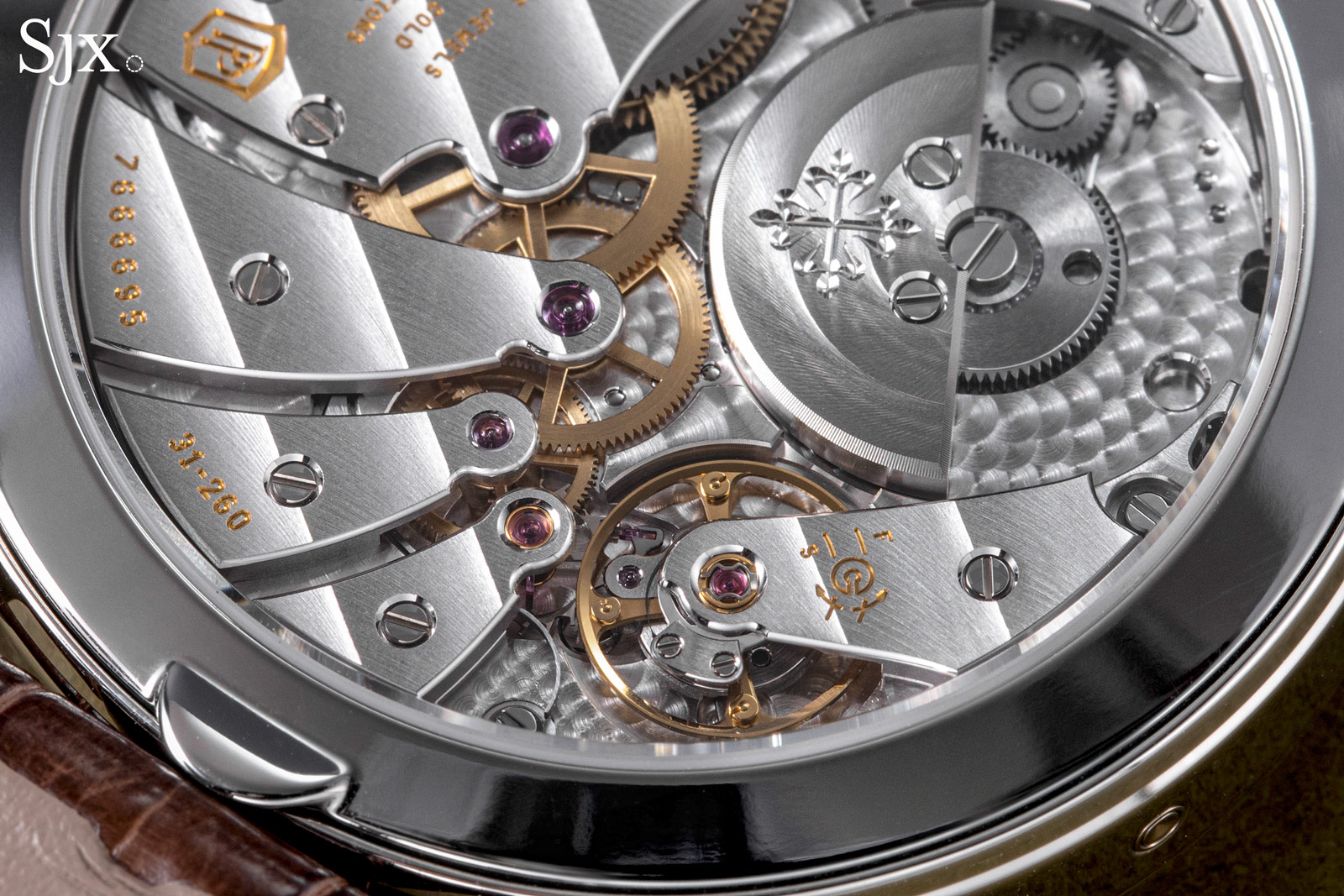
Although it is easily recognisable as a modern movement, the cal. 31-260 PS QL is classically inspired. The finger bridges for the going train are modelled on pocket watch movements, while the bridges incorporate sharp corners for a bit more decorative finishing.
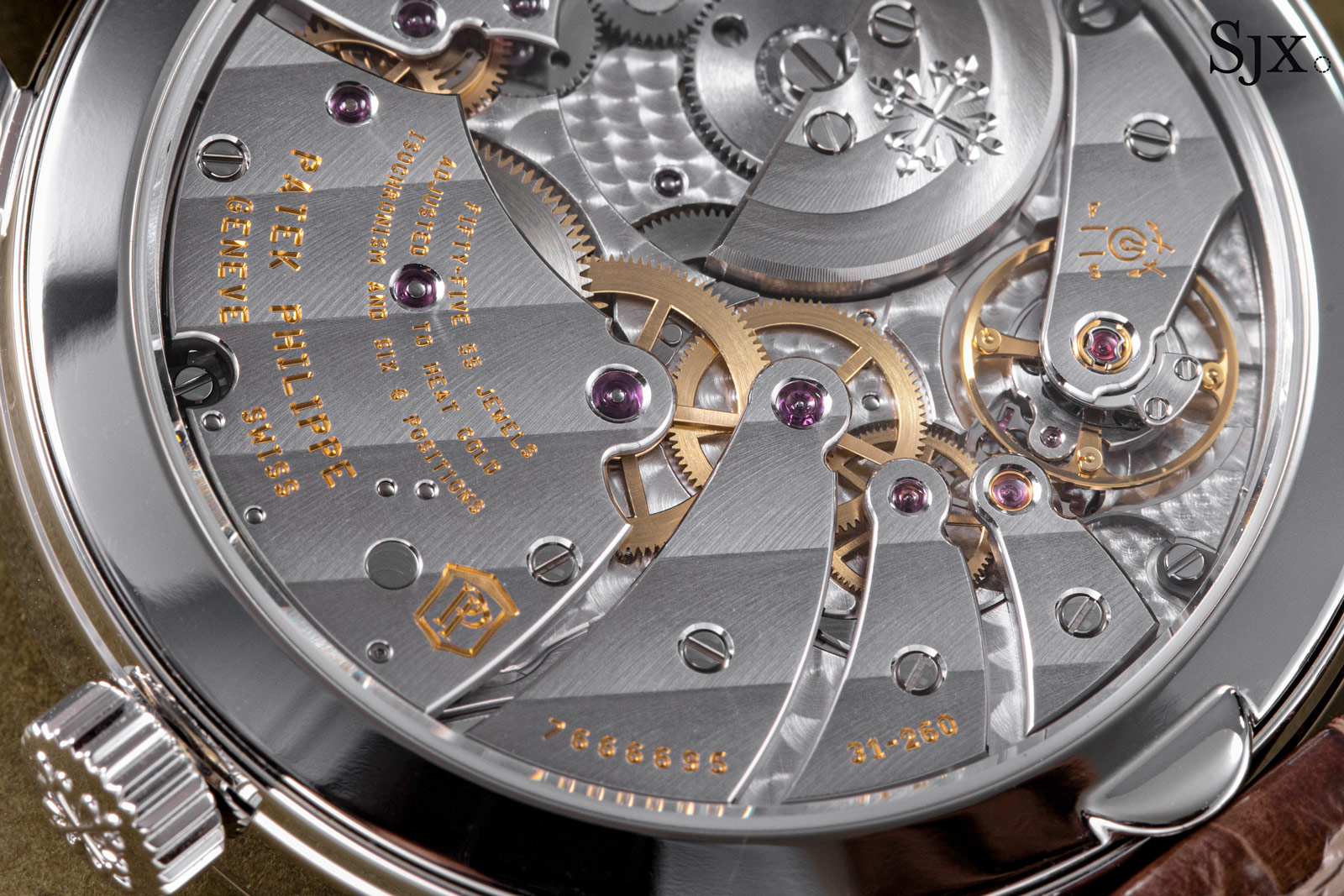
The movement decoration is excellent and amongst large-scale, industrial-haute horlogerie brands. Though by no means artisanal, but some elements are evidently done by hand.
The appeal of the decoration is enhanced by the movement design, which was definitely conceived with visual appeal in mind given the obvious decorative flourishes.

Notably, the movement also incorporates modern materials like ceramic balls in the rotor bearing as well as open-worked components made via LIGA lithography. And like most Patek Philippe movements now, it has a Spiromax hairspring made of silicon.
Key facts and price
Patek Philippe In-Line Perpetual Calendar “Rose-Gilt” Dial
Ref. 5236P-010
Diameter: 41.3 mm
Height: 11.07 mm
Material: Platinum
Crystal: Sapphire
Water resistance: 30 m
Movement: Cal. 31-260 PS QL
Functions: Hours, minutes, seconds, and in-line perpetual calendar with moon phase
Frequency: 28,800 beats per hour (4 Hz)
Winding: Automatic
Power reserve: 38-48 hours
Strap: Alligator with platinum folding clasp
Availability: Now at retailers
Price: US$141,400; or 204,800 Singapore dollars
For more, visit Patek.com.
Back to top.








